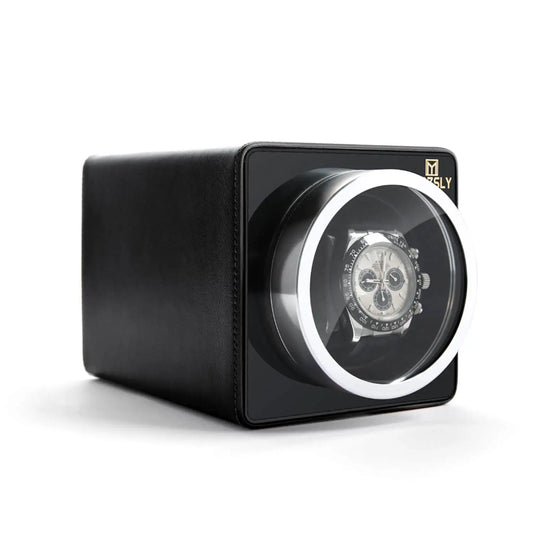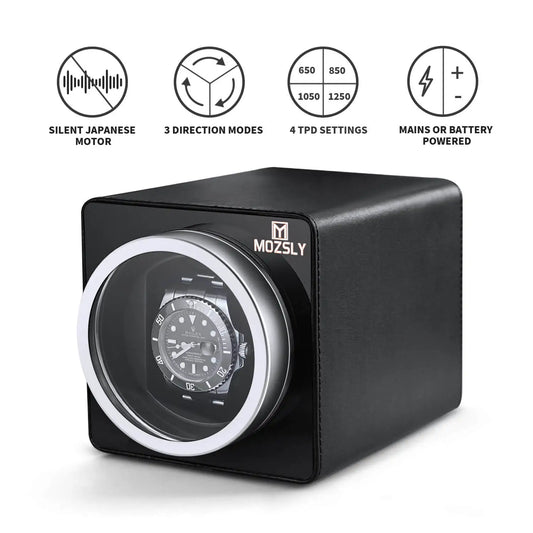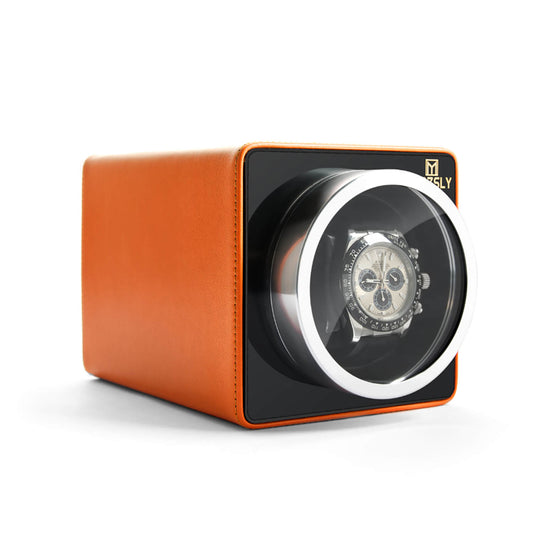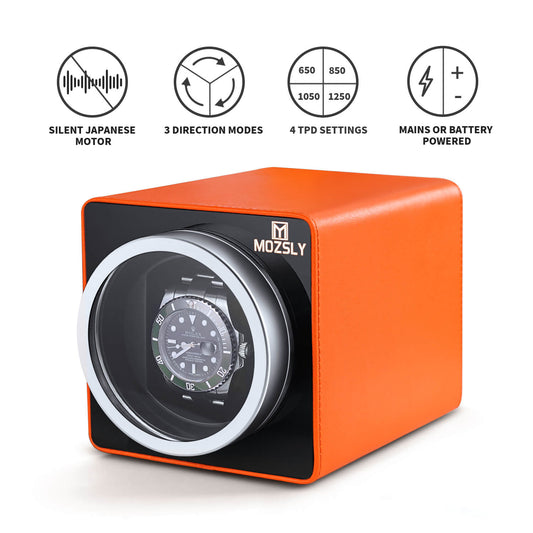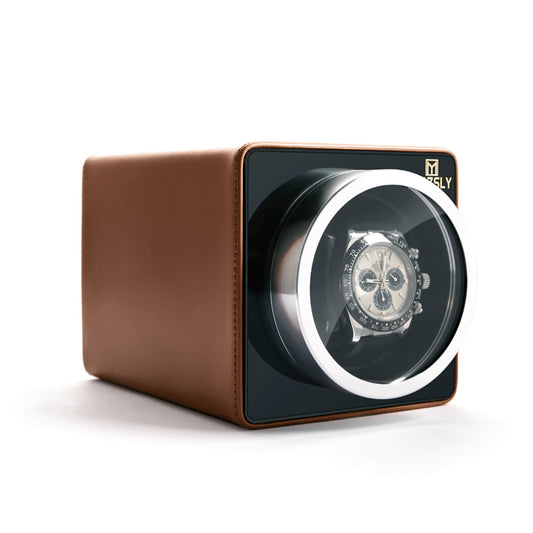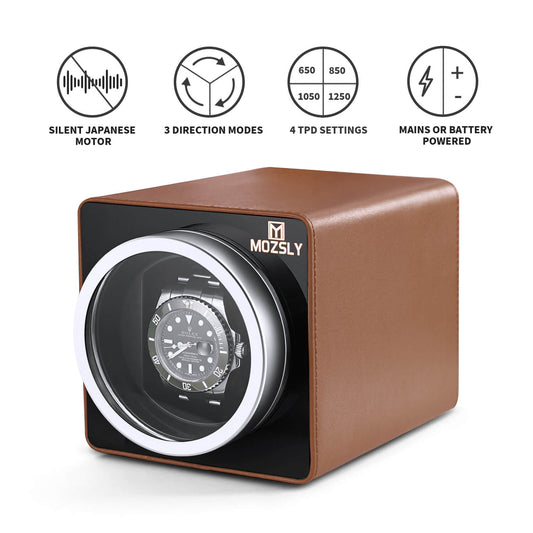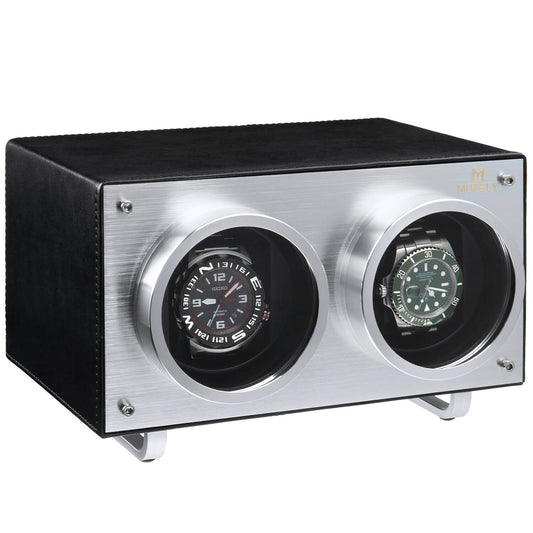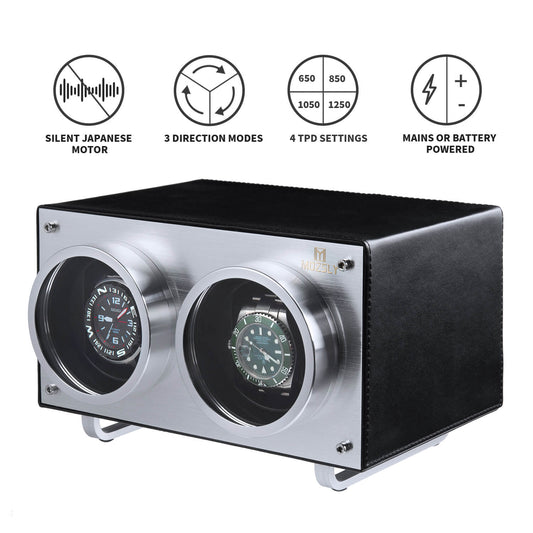How to Choose a Watch Winder for Your Watch?
How to Choose a Watch Winder for Your Watch?
Watch Winder is a device used to keep an automatic watch running when it is not being worn. How much do you know about watchwinders? You might want to know the dos and don'ts before buying. Learn more about watch winders here, including; how to choose a watch winder for your watch.
Watch stoppages can be annoying, and frequent hand winding can wear out your watch. No matter how many watches you have, they shouldn't sit still for long periods. Automatic mechanical watches rely on the vibration of an autopilot to drive gears to wind the watch. These are easy stops when you have multiple mechanical watches. The process of winding a watch can be simulated mechanically, so the winder has become a must-have for many watch lovers.

How does a watch winder work?
The watch winder is exactly that kind of tool, and it's made to keep automatic and mechanical watches running. A watch winder is a box or other container with places to hold more than one automatic watch.
You put your watch in the box when you're not wearing it, and the watch winder does its thing. The way the winder moves is like how a person's wrist moves, so the watch is always storing energy.
In this age of technology, there are many mechanical and automatic watches from different brands. The only problem for me as a watch collector was that the watch stopped telling time. But this problem can be solved with a watch winder, which keeps mechanical and automatic watches working even when they aren't being worn.
WATCH WINDER CAPACITY
Look at the size of your family of automatic watches. Is it a family of one, flying solo? or a family of five? Or, if you’re a collector, will it grow to a dozen or several dozen?
Investigate the winder options available in the price range you've specified. You’ll find watch winders for any number of watches, from one to six. You’ll even find watch safes with integrated winders for dozens of watches.
FOR THE ENTRY-LEVEL WATCH OWNER

A minimum, substantial quality is easily within the budget of anyone owning even an entry-level automatic watch. Refined, minimalist models can be had for $99 or, in some cases, even less.
A minimum rotation of watch winder per day
Look for a winder that has a minimum of 650 turns per day (27 turns per hour). That is an adequate specification for almost every watch.
DIRECTIONALITY
Also look for a bi-directional motor that can be set clockwise, counter-clockwise, or alternately. Some watches must be turned clockwise. Some require counter-clockwise winding. An alternating directionality satisfies both.
It’s an easy specification to find in high-quality, affordable watch winders. And it will ensure you’re prepared for any watch that comes into your collection in the future.
And those are the total specifications to consider when selecting a winder for your automatic watch: turns per day and directionality.
The rest is down to your instinct, judgment, taste, and desire. Select the winder that belongs with your watch, and fits within your responsible spending limits. There is no shortage of candidates. You’ll know when you see it.
FOR THE EXPERIENCED WATCH WINDER OWNER

The timeless principles of luxury acquisitions apply to the experienced collector as well as the entry-level enthusiast. Select your price limit, go with your instinct, and select what you want when you see it—without regard to small differences in price.
Acquiring high-end watch winders is governed by the same principles we’ve already mentioned. You’re not shopping. You’re selecting based on taste and desire. No connoisseur of luxury buys a Bentley for the features or specifications but for the lifestyle, the elegance, and the experience. And it’s the same with experienced owners of quality, high-end watch winders.
Get off the specs list. Every high-end winder is perfectly adequate for mechanical needs. On your journey of selection and acquisition, act with your aesthetic sense, taste, and judgment.
High-end watch winders are like fine furniture. or a second home. And some of them cost as much as a well-appointed mountain cabin. You spend time looking for the best when buying a home or fine furniture. You’re developing your taste. So spend time observing the most expensive and beautifully crafted watch winders you can find.
You’ll learn not only about the $144,000 (and up) watch winders, but more importantly, you’ll learn about yourself. about your taste. about your judgment and desire for fine things in life. So then you’ll make a selection more attuned to yourself, and to the timepieces you own. Distrust watch winder buying guides that point you toward specific winders. They don’t know you. Trust yourself.
Trust your taste, as you develop your taste and judgment. It’s an aesthetic, experiential acquisition. Not “shopping”.You’ll know the watch winder is destined for you when you see it. That’s the mark of a true connoisseur.
Suggestion
At present, there are many brands of winders on the market, and the quality is uneven. Buying a low-quality winder is more harmful than not using it. If you're looking for great value in a watch winder, the Mozsly Single Watch Winder is the answer. If you need a multi-winner, we recommend that you take a look at our double-winder collection.
Special Note
The direction of rotation - You must choose the direction of rotation that matches your watch so it can perform its function.
Angle - The tilt angle of the watch position is also important. Excessive tilting may make the watch unstable.
Pillows - Some winder cushions and supports can lengthen a watch's bracelet or leather strap. If it's a cushion or pillow, make sure it's soft enough not to stretch the strap too much. Spring-loaded mounts are slightly better in this regard, as they will provide enough tension to hold the watch in place without stretching it.
Portability - Do you wind up your watch and leave it at home, or take it with you when you travel? If you want to take it with you, it's best to invest in a battery-operated watch winder.
In Conclusion
When you decide to buy a watch winder, you need to pay attention to its category, slot, TPD, rotation, form, etc. Hope this article helps you. If you want to see more models of watch winders, you can check out Mozsly, we have you covered.
Thanks for reading. If you want to know more about watch winders, you can browse our blog, where there is various information for your reference. If you have any questions, please feel free to contact me.
Frequently Asked Questions
1. Why does the watch winder I bought not work?
There are a variety of watch winders on the market of varying quality, so we recommend that you choose a reputable watch winder. Why do some people buy a watch and wind it up, but the watch still cannot display the time accurately? It may be because you have not set the winding direction and TPD for your watch. If your watch is uni-winding, you need to know whether the automatic tourbillon is winding clockwise or counterclockwise. If the direction of rotation is set incorrectly, the watch will be powered off and cannot be wound. If your watch is bi-directional, you can switch it by shaking it left and right. The exact setting depends on your watch.
2. You do not need to wind your watch if you have:
- Quartz watch. This quartz movement is battery-operated.
- Manual mechanical watch. This movement must be wound manually every day.
- Kinetic watches. This movement requires a "Kinetic" charger.
3. Will the winder damage the watch?
Generally no. Set the correct winding direction and the number of revolutions per day according to the movement, which will not cause damage to the mechanical watch. A common misconception is that winding keeps a watch's mainspring fully wound and that constant energy input to it could cause damage. This is incorrect in several respects. Just make sure the winding is compatible with your watch and that you can adjust how fast it spins, and you'll be good to go.
4. Will an automatic watch be overwound?
No, that's not possible. All automatic watches have a built-in sliding mechanism that prevents overwinding. However, this safety device should not be overused as it will eventually wear out. All high-quality watch winders should have some sort of timer to regulate the actual winding time.
5. How much winding time does my watch need?
Instead of talking about winding time in terms of minutes or hours, it's better to talk about revolutions per day (TPD). This is the number of revolutions of the internal rotor required to wind a particular watch per day. Most automatic watches require 500 to 800 TPD, but there are others with longer power reserves requiring 1300 TPD.
For example, a Rolex President needs about 600 TPD. Rolex watches, like many other brands, are designed to wind in both directions. However, some other watches only wind in one direction, which can be either clockwise or counterclockwise. For example, many Patek Philippe watches can only be wound counterclockwise. Chronographs using the Valjoux 7750 caliber are wound clockwise only and require at least 800 TPD.



